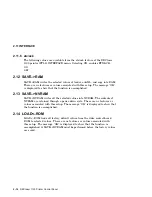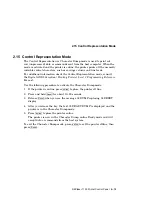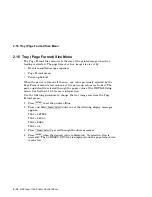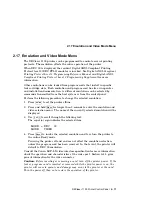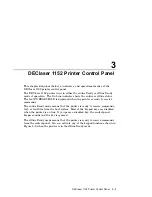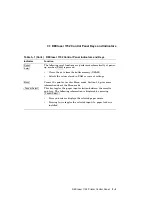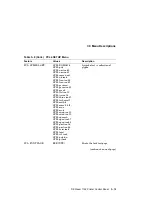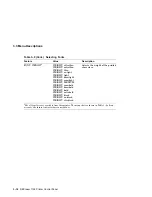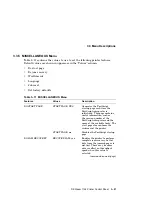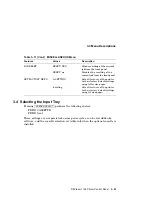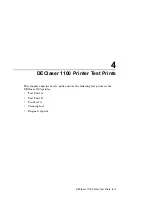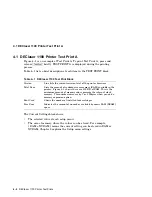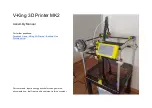
3.3 Menu Descriptions
Table 3–4 (Cont.) I/F: SERIAL (I/F: SERIALB) Menu
Feature
Values
Description
SER: FLOW CONTROL
FLOW: XON/XOFF
Uses software to control the flow of data
to the input buffer of the printer. It
is sometimes referred to as software
handshaking protocol, a method the printer
and the host computer use to exchange xon
/xoff signals. These signals prevent the input
buffer from overflowing with data. If the
input buffer becomes full and handshaking is
not enabled, the overflowing data will be lost.
Xon/xoff must be enabled in systems that use
this software handshaking protocol to prevent
the loss of data.
FLOW: dtr
Uses hardware to regulate the flow of data to
the input buffer of the printer. The printer
transmits a signal to the DTR line of the
serial port when it is ready to receive data.
This is sometimes referred to as the hardware
handshaking protocol.
FLOW: etx/ack
This feature is another type of handshaking
protocol that is used on some systems to
prevent data overflow. It uses software to
regulate the flow of data to the input buffer
by exchanging signals with the host computer.
Note: The end of text/acknowledge feature
is not supported on Digital systems. Use xon
/xoff or DTR if you have a Digital system.
SER: DATA BITS
The number of data bits the printer expects
to see in each character it receives.
DATA BITS: EIGHT
The printer is set to receive and transmit
characters composed of eight bits. This
setting is valid with 1 or 2 stop bits and no
parity.
DATA BITS: seven
The printer is set to receive and transmit
characters composed of seven bits. This
setting is valid with 1 or 2 stop bits and even
or odd parity.
SER: STOP BITS
Specifies the number of stop bits. Some
systems use one stop bit while other systems
require two.
(continued on next page)
3–10 DEClaser 1152 Printer Control Panel


